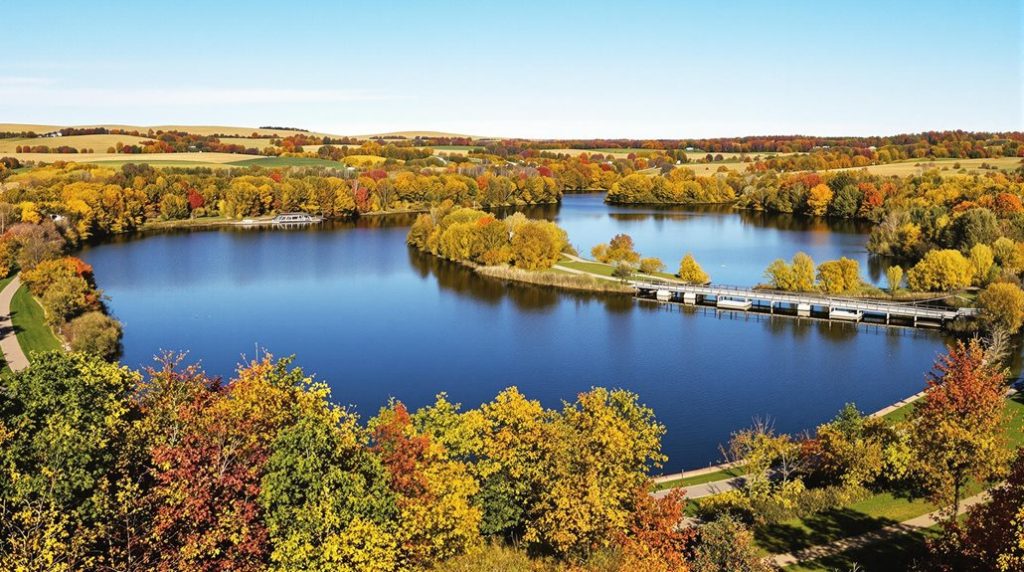Service Area
Robbinsdale MN
Robbinsdale, Minnesota, situated within the Minneapolis–Saint Paul metropolitan area in Hennepin County, spans about 2.98 square miles. Incorporated in 1893, it has evolved from a rural landscape to a vibrant suburb. Notable for publishing *Captain Billy's Whiz Bang*, Robbinsdale celebrates its heritage with Whiz Bang Days. The city offers a mix of residential and commercial areas, accessible via Minnesota State Highway 100. For more insights into its transformation and attractions, further exploration reveals a rich cultural tapestry.
Expert Highlights
- Robbinsdale is in Hennepin County within the Minneapolis–Saint Paul area.
- Founded in 1893, it has a mix of residential and commercial areas.
- Known for *Captain Billy's Whiz Bang* and Whiz Bang Days celebrations.
- Features parks like Spanjers and Walter J Sochacki Community Park.
- Nearby attractions include the Minneapolis Institute of Art and Paisley Park.
Geography and Location
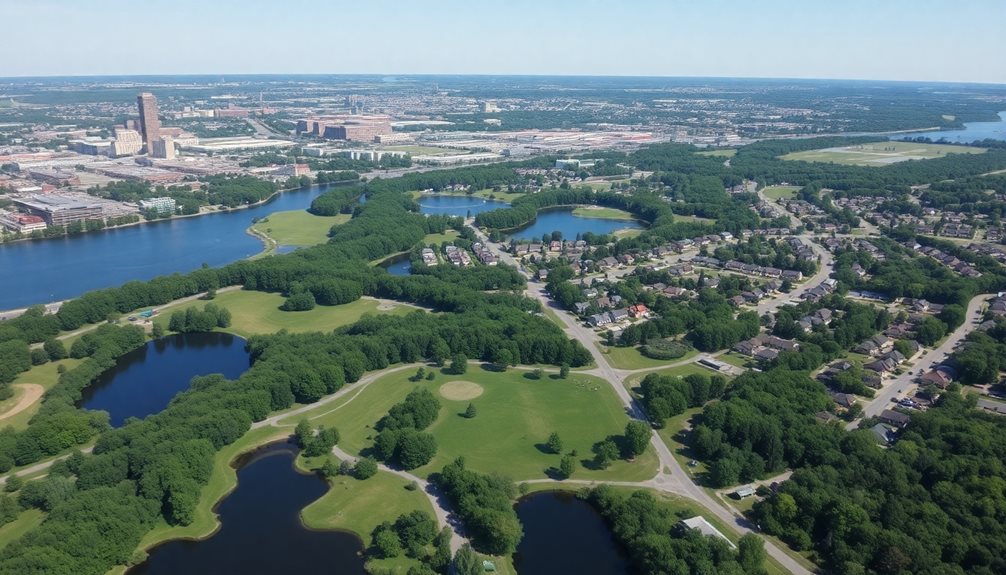
Robbinsdale is a city situated in Hennepin County, within the larger Minneapolis–Saint Paul metropolitan area. It is adjacent to the northwest portion of Minneapolis, offering a diverse landscape that includes both land and water areas.
The city encompasses a total of 2.98 square miles, with 2.79 square miles being land and 0.19 square miles consisting of water. Its elevation is approximately 873 feet above sea level.
Robbinsdale is accessible via Minnesota State Highway 100 and County Road 81, which serve as key transportation routes within the city. The city's geography supports a mix of residential and commercial development. The charming community layout adds to Robbinsdale's appeal as a suburban destination within the Twin Cities region.
Historical Development
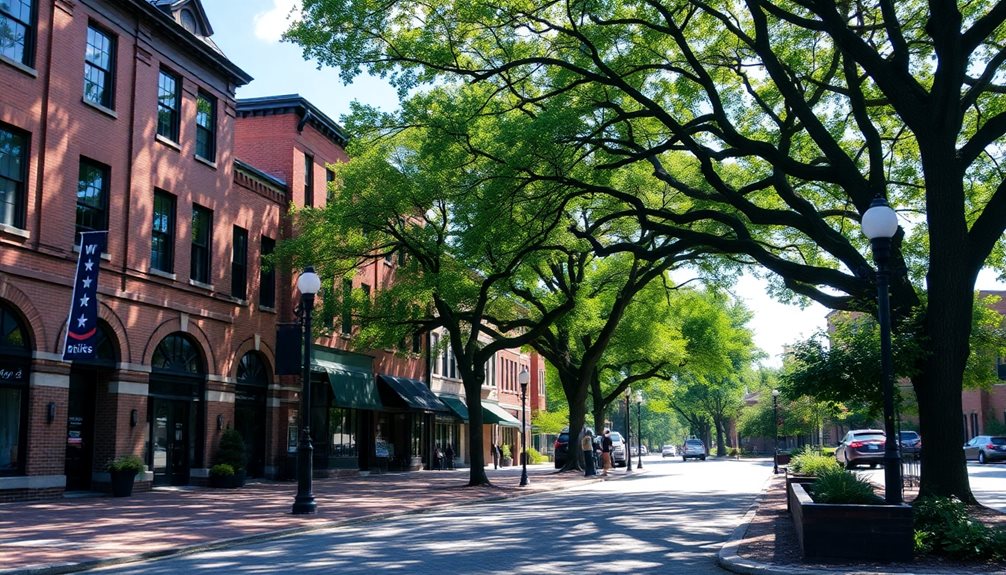
Beyond its geography, the historical development of this city in Hennepin County reveals a rich narrative. Founded by Andrew B. Robbins, the area evolved from a rural landscape to a vibrant community. Located west of Lake Minnetonka's shores, Robbinsdale developed into a distinct suburban destination.
| Event | Year | Description |
|---|---|---|
| Founding | 1893 | Incorporated as a village |
| Fawcett Publications | 1919 | Founded, published *Captain Billy's Whiz Bang* |
| Racial Covenants | Early 1900s | Restricted housing based on race |
| North Memorial Development | 1940, 1954 | Hospital expansion and reorganization |
Cultural Significance
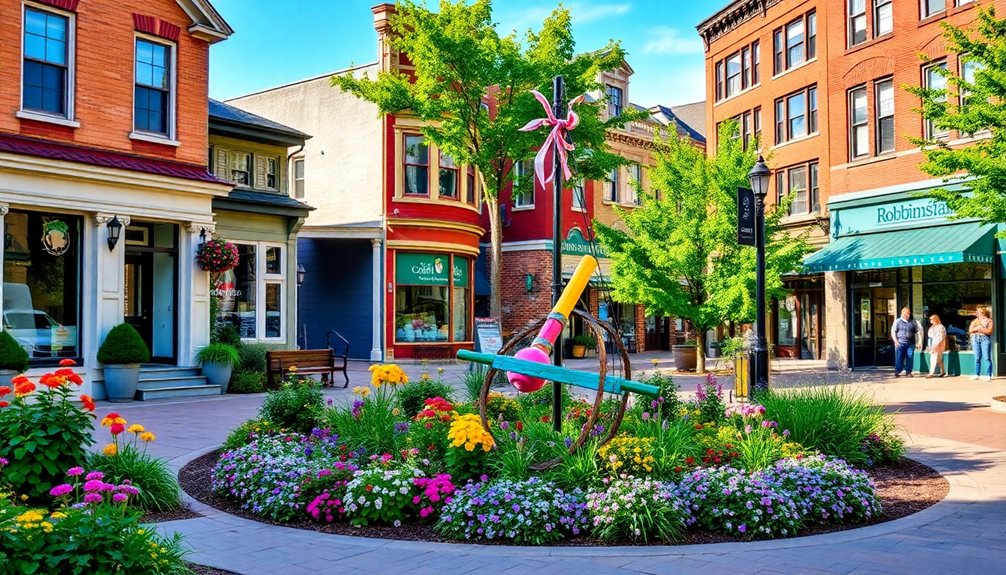
The cultural significance of Robbinsdale, Minnesota, is deeply intertwined with its historical foundation and subsequent development. Robbinsdale's cultural landscape is shaped by its early role as a streetcar suburb and industrial hub, attracting residents and businesses alike.
The city's notable historical events, such as the publication of *Captain Billy's Whiz Bang* in the 1920s, have left a lasting impact. Today, Robbinsdale commemorates this heritage through annual Whiz Bang Days celebrations, reflecting its enduring cultural identity and rich history.
These events highlight the city's evolution from a rural setting to a vibrant suburban community.
Modern Attractions**
Modern attractions in and around Robbinsdale, Minnesota, offer a blend of historical charm and contemporary appeal. The Minneapolis Institute of Art and Walker Art Center are nearby cultural highlights, while Paisley Park provides a unique musical experience.
Spanjers Park and Walter J Sochacki Community Park in Robbinsdale itself offer outdoor recreation options, including sports facilities like tennis courts and softball fields, allowing residents to engage in active lifestyles freely.
These attractions cater to diverse interests, fostering a vibrant community environment.
Expert Final Thoughts
To summarize, Robbinsdale, Minnesota, offers a blend of geographic proximity to Minneapolis and historical identity. Founded in 1893, it has evolved greatly, influenced by figures like Andrew Bonney Robbins. The city's cultural significance includes its "Birdtown" nickname and the annual Whiz Bang Days celebration. Modern attractions feature North Memorial Medical Center and various local festivals, showcasing a mix of medical excellence and community events within this suburban setting.
Crystal MN
Crystal, Minnesota, is a suburban city in Hennepin County, approximately five miles northwest of Downtown Minneapolis. It spans 5.88 square miles, with 5.78 square miles of land and 0.10 square miles of water. Major routes include Minnesota State Highway 100 and County Road 81. The city is bordered by Brooklyn Park, Brooklyn Center, Robbinsdale, Golden Valley, and New Hope. Crystal offers extensive parks, a small airport, and community facilities like the Crystal Community Center, providing diverse recreational and social opportunities for its residents, with more details available regarding its community and services.
Expert Highlights
- Crystal, MN, is a suburb five miles northwest of Minneapolis in Hennepin County.
- Total area is 5.88 square miles with over 240 acres of parks.
- Major routes include MN State Highway 100 and County Road 81.
- Features Crystal Airport and multiple recreational facilities.
- Population projected to be about 21,184 by 2025.
Geography and Location
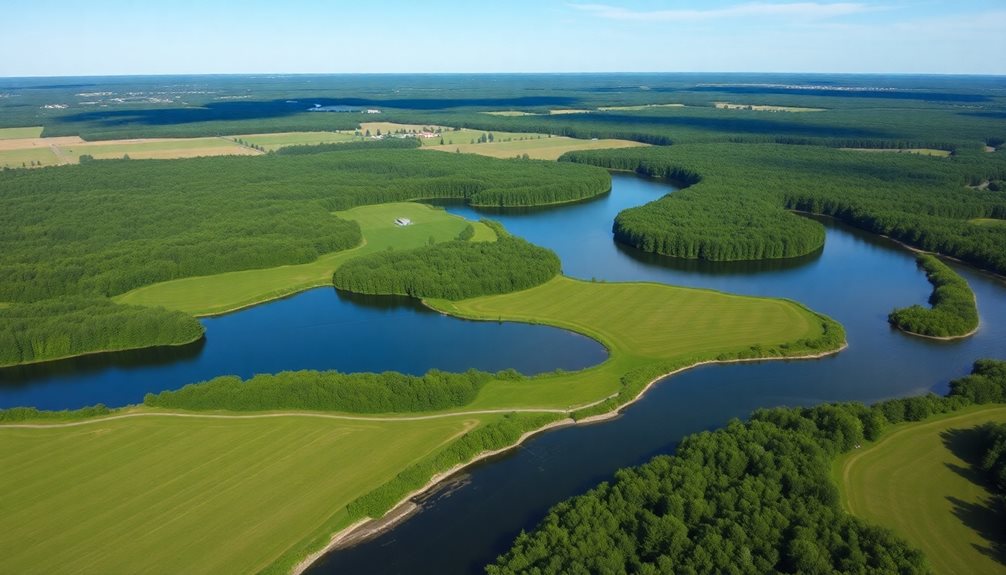
Crystal, Minnesota, is situated in Hennepin County, approximately five miles northwest of Downtown Minneapolis.
Crystal, Minnesota, lies in Hennepin County, about five miles northwest of Minneapolis.
Its geography includes a total area of 5.88 square miles, with 5.78 square miles being land and 0.10 square miles being water.
Major routes include Minnesota State Highway 100 and County Road 81. The city is bordered by Brooklyn Park to the north, Brooklyn Center and Robbinsdale to the east, Golden Valley to the south, and New Hope to the west.
Crystal also features a small general aviation field, the Crystal Airport, and over 240 acres dedicated to parks.
The city offers numerous hidden gems for visitors and residents to explore throughout its scenic landscape.
Points of Interest

Points of interest in this region highlight a blend of natural beauty, community events, and local attractions.
Crystal features the Crystal Cove Aquatic Center and a variety of parks and trails, offering recreational spaces for residents.
Community events like the Crystal Frolics, held annually at Becker and Welcome Parks, foster community engagement and celebrate local heritage.
Local dining options include Crystal Cafe & Grill and Steve O's Bar & Grill, providing diverse culinary experiences for visitors and residents alike.
For construction and renovation projects, residents can rely on concrete solutions expertise from Legacy General Services, specializing in residential and commercial concrete work.
Community Life
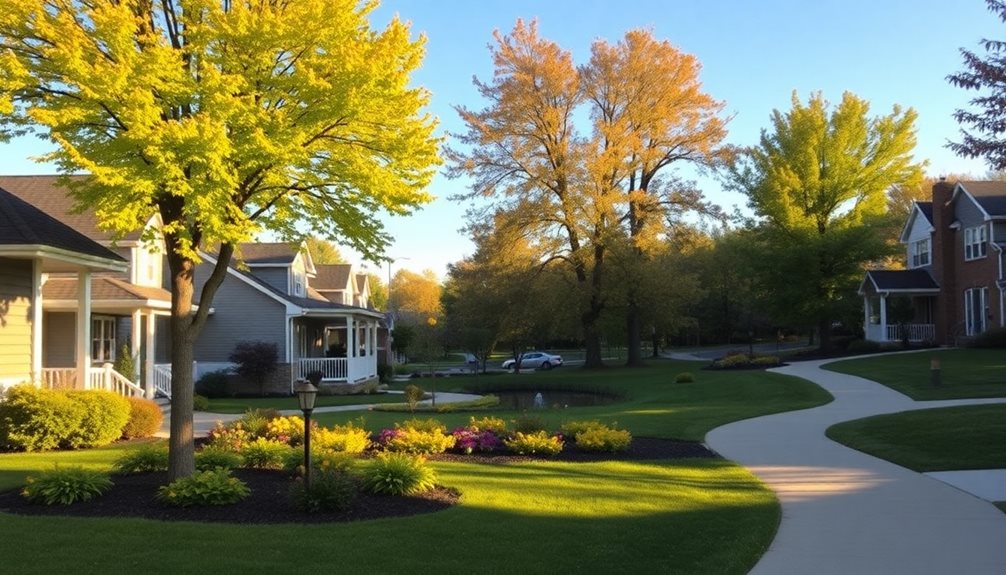
Community life in Crystal, Minnesota, is deeply rooted in its proactive neighborhood efforts and a strong commitment to municipal services. Residents engage in various community events, including the MN Night to Unite, which fosters neighborhood unity and crime awareness.
Annual events like Crystal Frolics feature a range of activities, promoting community connection. Additionally, amenities such as the Crystal Community Center and Crystal Cove Aquatic Center provide venues for social interaction, supporting the city's mission to enhance residents' quality of life through innovative services and community engagement.
Services and Amenities**
Residents of Crystal, Minnesota, have access to a diverse array of services and amenities that enhance their quality of life and foster a vibrant community environment.
The city offers multiple recreational facilities, including the Crystal Cove Aquatic Center and 26 parks with various amenities like ball fields and trails.
Assisted living facilities provide services such as medication management, chef-prepared meals, and high-speed Wi-Fi.
Additionally, Crystal Airport serves as a general aviation hub with facilities for flight training and aircraft maintenance.
Expert Final Thoughts
Crystal, Minnesota, is a well-established suburban community located near Minneapolis. The city's diverse neighborhoods and parks system support a quality lifestyle for its residents. Based on the 2020 census, Crystal has a population of 23,330, with a strong median household income and high homeownership rate. Its infrastructure includes the Crystal Community Center and several public parks, enhancing community engagement and services. Overall, Crystal maintains a balance of residential comfort and accessible amenities.
New Hope MN
New Hope, Minnesota, evolved from a farming community within Crystal Lake Township to a suburban city incorporated in 1953. Today, it has a population of around 20,000, with a diverse racial composition and a median household income ranging from $73,698 to $94,243. The city offers vibrant amenities, including parks and public transit, and community development initiatives enhance its appeal. Continuing to explore reveals how New Hope balances growth and community engagement.
Expert Highlights
- New Hope, MN, was part of Crystal Lake Township before its 1953 incorporation.
- Population is about 20,000 to 21,000 with diverse racial communities.
- Median household income is around $73,698 with an 8-11% poverty rate.
- Offers 18 parks and excellent public transit for residents.
- Features an aquatic center and golf course for recreational activities.
Historical Background
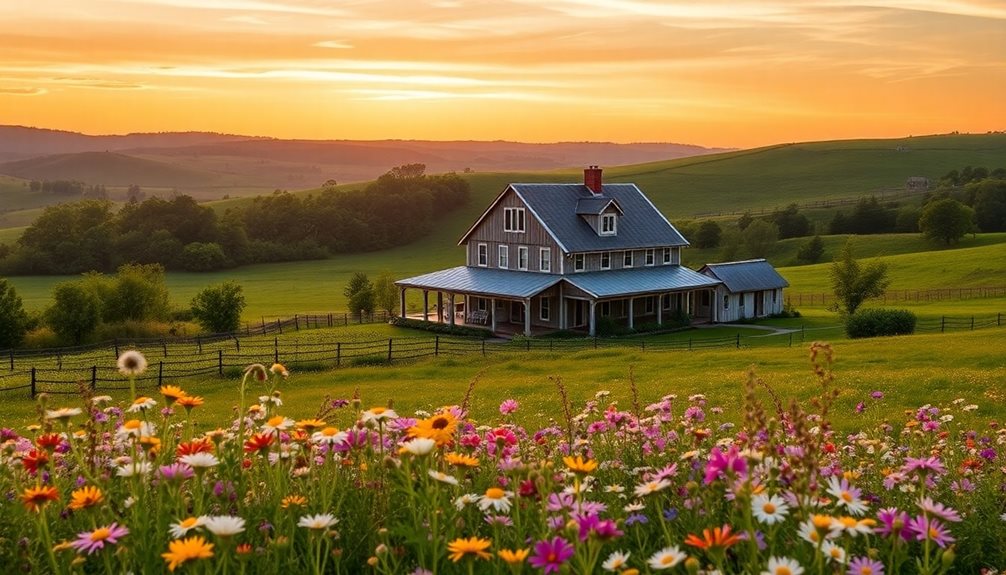
New Hope, Minnesota, has a rich historical background rooted in its formation as a distinct entity from neighboring areas.
Originally part of Crystal Lake Township, it evolved into a farming community with family farms in the early 1900s. As Minneapolis expanded, residential developments moved westward, leading to the incorporation of nearby Crystal in 1936.
The western portion broke away to form New Hope Township, but in 1953, it incorporated as a city to prevent annexation by Crystal and saw rapid growth thereafter. This transformation marked a significant shift from agriculture to residential living.
Today, New Hope's charms continue to attract residents seeking a welcoming suburban community.
Current Demographics
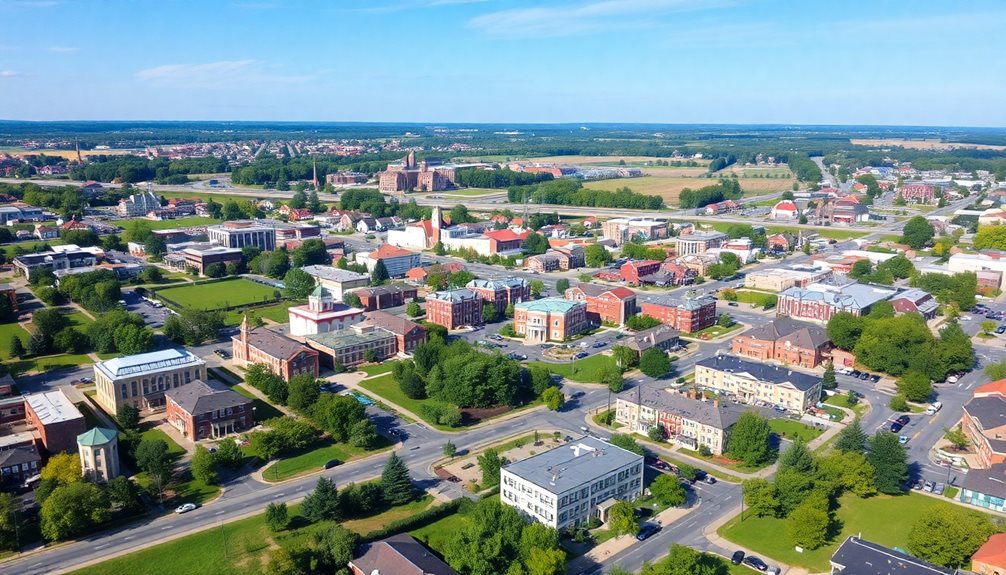
As of the present day, the demographics of this Minnesota city reveal a complex tapestry of ethnic backgrounds and socioeconomic conditions.
New Hope's population is around 20,000 to 21,000 residents, with a decline observed in recent years. The racial makeup includes a majority of White residents (59-61%), followed by Black or African American (24-27%), and Hispanic (5-7%).
The median age is approximately 39-41 years, reflecting a mixed age distribution. Median household incomes vary, with reported figures around $73,698, though poverty affects about 8-11% of families.
Located near charming Robbinsdale, New Hope shares the diverse cultural fabric that characterizes this region of Minnesota.
Lifestyle and Amenities

Incorporating the diverse demographic backdrop, New Hope, Minnesota, presents a vibrant lifestyle fueled by an array of amenities that enhance residents' quality of life. Amenities include parks, fitness facilities, and convenient public transit options. The city boasts 18 parks with diverse recreational activities.
| Amenities | Features |
|---|---|
| Parks | 18 parks available |
| Transit | Excellent accessibility |
| Fitness | Community gyms |
| Recreation | Aquatic center, golf course |
These features contribute to New Hope's appeal, offering a blend of leisure and convenience.
Development and Challenges**
While the city of New Hope enjoys numerous lifestyle amenities, its development initiatives and frequent challenges reflect a broader metropolitan context.
Through programs like the Scattered Site Housing Program, New Hope transforms distressed properties, enhancing neighborhoods and boosting property values considerably—some properties have tripled in value.
Over eight years, 25 properties were revitalized, impacting local tax bases and improving living standards. These efforts align with regional development goals, supporting diverse housing options and local economic growth.
Expert Final Thoughts
New Hope, Minnesota, has transformed considerably since its early days as a farming community. From being part of Crystal Lake Township, it became a distinct entity with its incorporation in 1953. Today, it offers a blend of residential living and community amenities, though challenges like population fluctuations and urbanization have shaped its development. The city continues to evolve, balancing history with modern needs.
Golden Valley MN
Golden Valley, MN, is a city that blends suburban comfort with urban accessibility. The community features a strong economic base, hosting multinational corporations like General Mills and Allianz Life, along with over 30,000 local jobs. Recreational amenities include extensive parks and trails, enhancing quality of life. Educational opportunities are robust, with access to prestigious schools. For more insights into its vibrant community and economic landscape, further exploration offers additional details.
Expert Highlights
- Golden Valley, Minnesota, has a population of approximately 22,715.
- The community offers suburban comfort with urban accessibility.
- Multinationals like General Mills support the local economy.
- It features over 1,035 acres of parks and trails.
- Education standards are high, with well-funded schools.
Community Profile
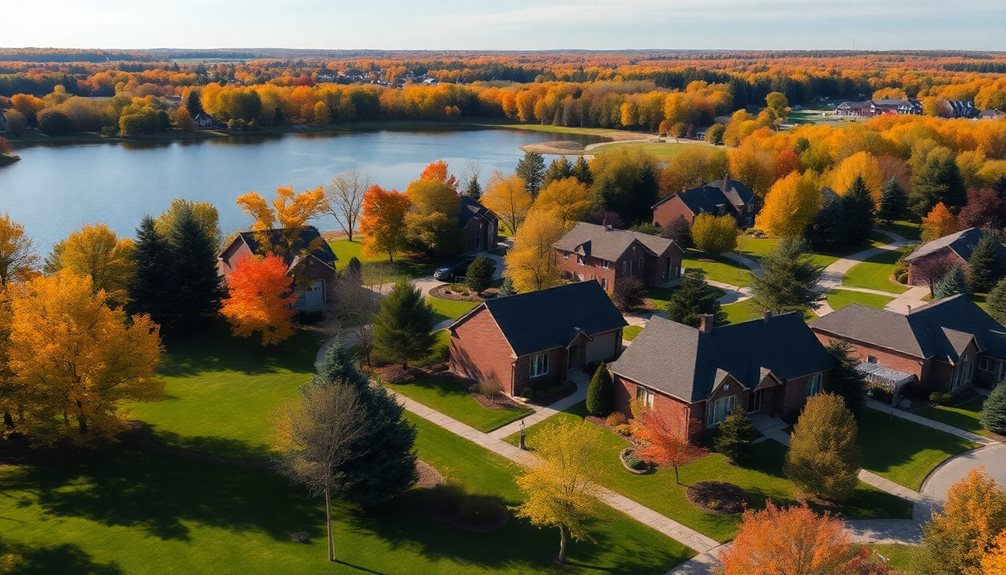
Golden Valley, a vibrant first-ring suburb of Minneapolis, boasts a robust community profile underscored by its strategic location, diverse neighborhoods, and an array of amenities.
The city's population of approximately 22,715 enjoys access to numerous parks and nature areas, fostering a strong sense of community. With a diversity grade of B+, residents appreciate its family-oriented environment and high education levels, where 25% hold a master's degree or higher.
Median household income stands at $114,435, reflecting its economic significance and attractiveness to businesses and residents alike.
The Golden Valley community continues to charm visitors and locals with its blend of suburban comfort and urban accessibility.
Economic Landscape
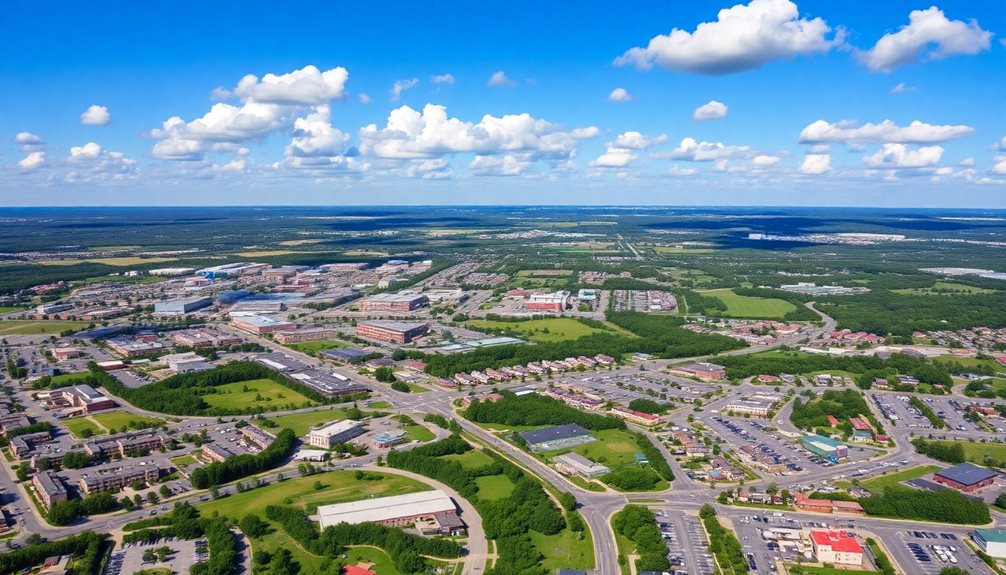
The economic landscape of this Minneapolis suburb is characterized by a significant presence of multinational corporations, which contribute to a thriving business environment. Notable companies include General Mills and Allianz Life, fostering employment opportunities and economic stability. While Brooklyn Park's attractions extend beyond economics, Golden Valley maintains its own distinct commercial identity.
Key economic indicators include:
- Median Household Income: Approximately $110,026 in 2022, showcasing a strong financial base.
- Industry Diversity: The city hosts various sectors like healthcare and professional services.
- Employment Opportunities: Over 30,000 full-time jobs available locally.
Recreational Amenities
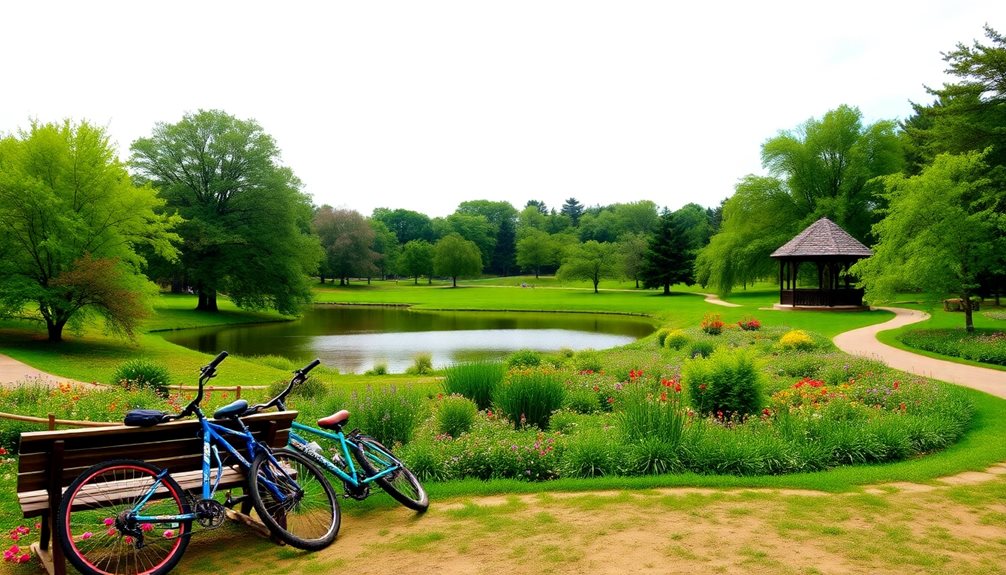
Beyond the economic foundation supported by multinational corporations, the recreational amenities in this metropolitan suburb are equally impressive, offering a diverse range of activities and venues.
Golden Valley boasts over 1,035 acres of parks and open spaces, with nearly 50 miles of trails and various activity areas. The city features 21 parks, including ski slopes and dog parks, providing extensive opportunities for outdoor enthusiasts.
These amenities are accessible from sunrise to 10 pm daily, ensuring freedom for residents to engage in physical activities and connect with nature at their convenience.
Educational Opportunities**
Education in Golden Valley is bolstered by a strong network of schools, with programs and facilities that align with high academic standards.
While the local public schools are not detailed in specific resources, residents also have access to prestigious private educational institutions like Breck School, which provides a thorough learning environment from preschool through grade twelve.
Key educational opportunities include:
- Academic Excellence: Breck School is renowned for its robust academic programs, preparing students for top colleges.
- Financial Support: Golden Valley schools spend considerably on each student, ensuring well-funded educational experiences.
- Diverse Programs: Various recreational and adaptive programs are available to support diverse educational needs.
Expert Final Thoughts
Golden Valley, Minnesota, presents a vibrant profile marked by a strong economic base with major employers like General Mills and Pentair, bringing over 60,000 jobs. The community boasts a mix of residential areas and significant parks, along with a diverse demographic and high educational attainment. Recreational opportunities abound, while educational options are supported by strong local schools. With a focus on strategic development and community engagement, Golden Valley remains an attractive and dynamic suburb of Minneapolis.
Minnetonka MN
Minnetonka, MN, is distinguished by its natural beauty, offering over 268 acres of maintained parkland and more than 100 miles of trails. The community features a strong sense of connection among residents, with cultural events and volunteer programs. Economically, Minnetonka hosts major businesses like Radisson and Stratasys, fostering innovation and growth. Outdoor activities include hiking and sports, while scenic locations like Lake Minnetonka provide ample recreation opportunities. Expanding exploration will reveal more about this vibrant suburb.
Expert Highlights
- Minnetonka boasts over 268 acres of parkland and 100 miles of trails.
- Lake Minnetonka offers scenic outdoor recreation opportunities.
- Community events foster a strong sense of neighborhood connection.
- Diverse businesses contribute to Minnetonka's economic growth.
- Outdoor activities like hiking and sports are readily available.
Natural Attractions

Minnetonka, Minnesota, is distinguished by its rich natural beauty, featuring an array of breathtaking landscapes and outdoor attractions.
The city boasts over 268 acres of maintained parkland, more than 100 miles of trails, and 1,000 acres of natural open spaces.
Its parks and trails, such as those found in Lake Minnetonka Regional Park, offer diverse settings, from easy to challenging hiking routes, and include scenic shorelines and abundant wildlife.
Additionally, Big Island Nature Park provides informal trails with beautiful lake vistas, preserving natural resources amidst residential development.
The charming city of Lake Minnetonka serves as a picturesque backdrop for numerous outdoor recreational activities and natural exploration opportunities.
Community and Culture
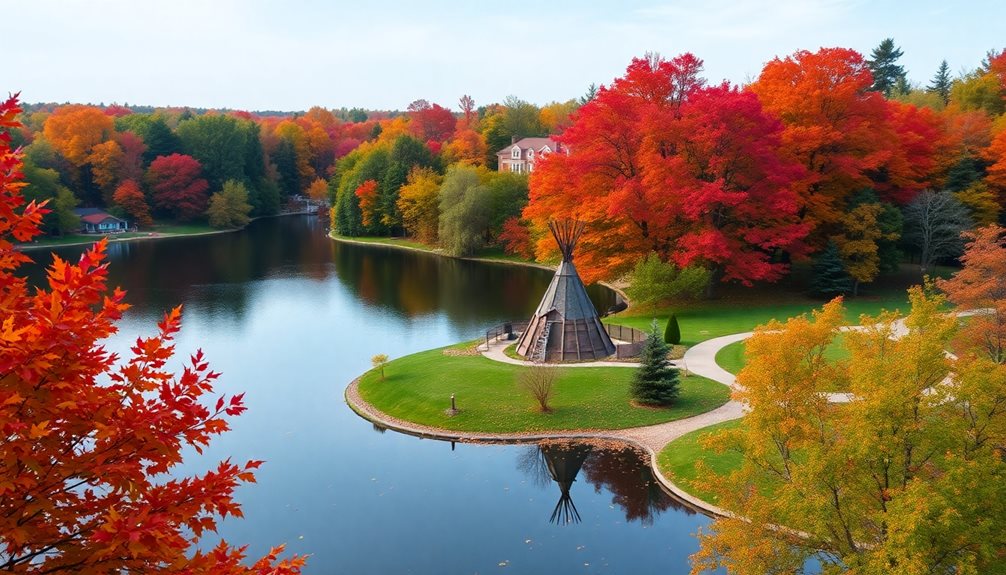
In suburban areas near Minneapolis, a vibrant blend of community spirit and cultural richness defines the lifestyle of residents.
Minnetonka's active community engages through numerous local events, cultural festivals, and farmers' markets, fostering a strong sense of connection among its over 53,000 residents. The city is committed to diversity, equity, and inclusion, welcoming all individuals regardless of race, age, or identity.
Minnetonka's vibrant community thrives through local events, festivals, and farmers' markets, fostering connection among residents in a diverse and inclusive environment.
This openness contributes to its cultural richness, allowing residents to thrive in a harmonious and inclusive environment.
Minnetonka's volunteer program also plays an essential role, with more than 1,000 residents and visitors participating annually.
Similar to nearby Rogers, MN, the community maintains a welcoming small-town charm while offering modern suburban amenities.
Corporate Presence and Economy

Beyond its vibrant community and cultural events, the economic landscape of Minnetonka is shaped by a strong and diverse business presence.
Importantly, Radisson Hotel Group Americas recently relocated its headquarters from Minnetonka to St. Louis Park, but this move highlights the area's attractiveness to corporate entities.
Stratasys, a leading 3D printing company, is moving its U.S. headquarters to Minnetonka, reflecting the city's appeal for innovation and business growth.
Minnetonka offers a conducive environment for corporate development, balancing technology and service industries.
Recreational Activities**
The recreational landscape of Minnetonka is characterized by an array of activities that capitalize on its natural beauty, offering residents and visitors alike a diverse range of outdoor pursuits.
Outdoor adventures include hiking at parks like Purgatory Park and engaging in sports at Civic Center Park, featuring football, soccer fields, and walking trails.
Additionally, Minnetonka offers opportunities for ice skating and swimming through community programs, emphasizing community engagement and individual leisure.
These activities foster a sense of community and personal well-being.
Expert Final Thoughts
Minnetonka, MN, offers a blend of natural beauty, cultural enrichment, and economic significance. The city is highlighted by numerous parks and lakes, hosting over 100 miles of trails. It supports a diverse community with various art and cultural activities. Minnetonka's economy is bolstered by significant corporate presence, while recreational options like Lake Minnetonka's water sports and hiking trails offer diverse experiences, making it an attractive destination.
Medina MN
Medina, MN, boasts a population of approximately 7,000 residents, with a high median income and strong community ties. The city offers a blend of natural beauty and suburban lifestyle benefits, including boating on Lake Independence and golfing at Baker National Golf Course. Its proximity to Minneapolis provides access to cultural and economic opportunities, making it attractive for families seeking a tranquil yet connected environment. Exploring further reveals more about its economic significance and community life.
Expert Highlights
- Population: Approximately 7,000 residents, with growth trends.
- Community: Close-knit neighborhoods with strong social ties.
- Activities: Boating, golfing, hiking, and karate classes available.
- Lifestyle: High home values and median incomes.
- Location: Near Minneapolis, offering urban amenities.
Community Life
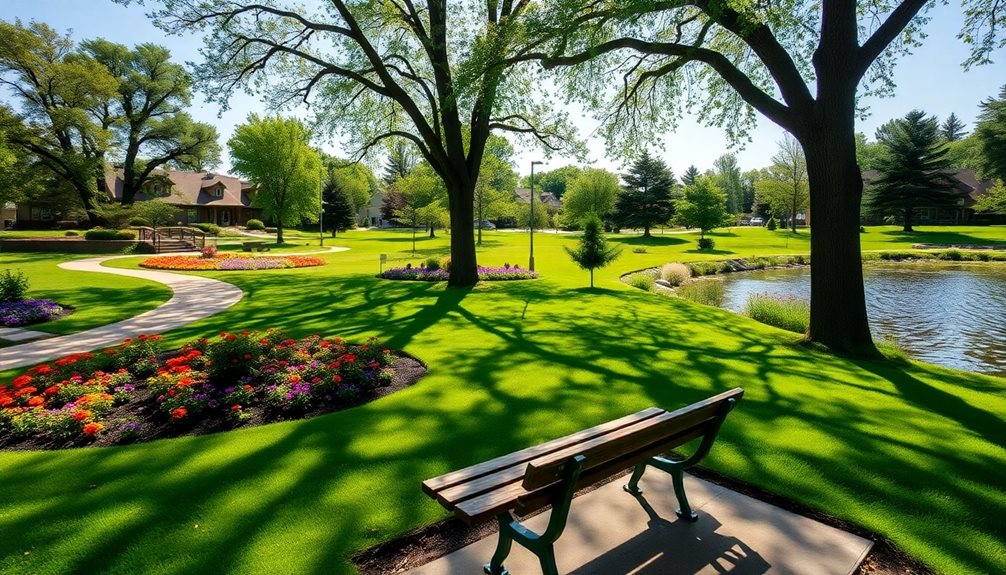
Medina, Minnesota, despite its small population of approximately 6,000 residents, cultivates a vibrant community life through its close-knit neighborhoods and accessible amenities.
The city offers a range of activities, including events like the Bike Rodeo and the Hamel Flea Market, which foster interaction among residents.
The city's Bike Rodeo and Hamel Flea Market events promote neighborhood interaction and community bonding.
The Hamel neighborhood, with its community building and shopping area, acts as a central hub for community activities.
Medina's proximity to Minneapolis provides residents with access to broader cultural and economic opportunities while retaining a small-town feel.
These elements contribute to a dynamic yet intimate community environment.
The small town charm of Medina attracts families seeking a peaceful suburban lifestyle while staying connected to urban amenities.
Recreational Activities
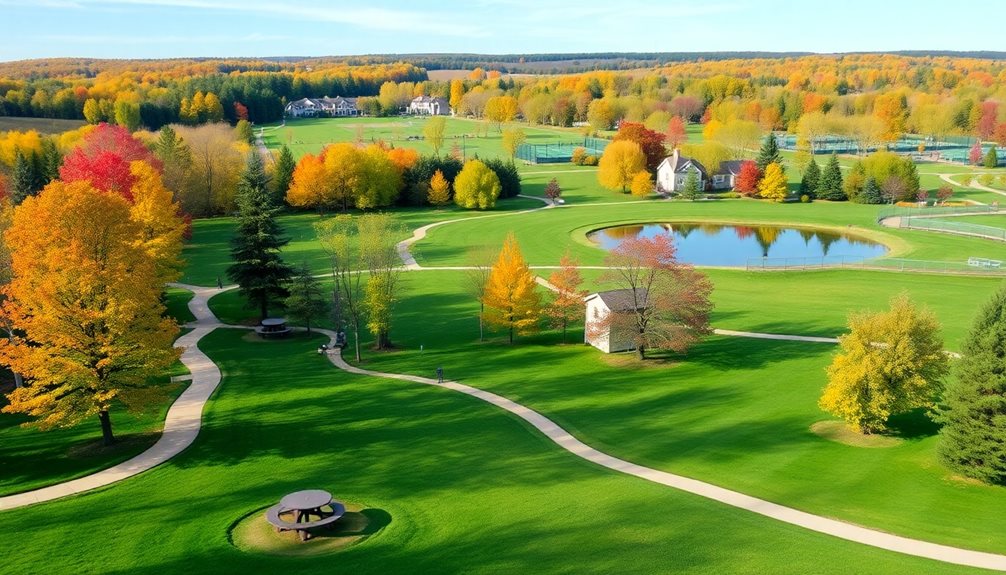
Residents of Minnesota's suburban communities often enjoy a blend of natural beauty and recreational opportunities, which is particularly evident in the surrounding areas of cities like Medina. The city offers various activities, including boating on Lake Independence and golfing at the Baker National Golf Course. While St. Louis Park features diverse entertainment options, Medina maintains its peaceful suburban charm.
| Activity | Location |
|---|---|
| Boating | Lake Independence |
| Golfing | Baker National Golf Course |
| Hiking | Baker Park Reserve |
| Karate Classes | Dojo Karate in Medina |
Living in Medina

The tranquil surroundings and robust community ties that define living in this region of Minnesota offer a unique blend of natural serenity and social connection.
Tranquil surroundings and strong community ties create a serene and connected living environment.
Medina boasts a population of around 7,000 residents, with high median incomes and home values, reflecting a high standard of living. However, it also has a costly lifestyle, with limited local amenities, necessitating transportation for many services.
Despite these challenges, residents enjoy low crime rates and proximity to Minneapolis, making it an attractive choice for those seeking balance between tranquility and urban accessibility.
The area is served by several school districts.
Economic Overview**
A high standard of living, characteristic of communities with high median incomes and property values, often correlates with a robust local economy.
Medina, MN, exemplifies this with a median household income of $215,612 and a median home value of $675,472. The unemployment rate is relatively low at 4.2%, with future job growth projected at 36.9% over the next decade.
High sales and income taxes, at 7.5% and 7.1% respectively, reflect the area's economic resilience and support for local services. The local economy benefits from its proximity to Minneapolis.
Expert Final Thoughts
Medina, Minnesota, offers a unique blend of suburban charm and recreational opportunities, with access to Minneapolis just 26 minutes away. The city's population is around 7,166 and growing, supported by strong economic indicators like a high median household income. Medina's appeal lies in its highly rated schools, low crime rates, and picturesque natural landscapes, making it an attractive choice for families and those seeking a tranquil yet connected lifestyle.
Corcoran MN
Corcoran, Minnesota, located about 20 miles northwest of Minneapolis, boasts a rich history dating back to Native American settlements. European settlers like Benjamin Pounder and Patrick B. Corcoran arrived in 1855, forming the town’s foundation. The township organized in 1858 and became a city in 1948, blending rural charm with modern amenities. Its strategic location and abundant land make it attractive for growth and development, offering a blend of rural and suburban living, which continues to evolve with planned expansions. Further exploration reveals more details on its vibrant community and growth initiatives.
Expert Highlights
- Corcoran, MN, is located in Hennepin County.
- The city was named after Patrick B. Corcoran, an early settler.
- Incorporated as a city in 1948, combining rural charm and modern amenities.
- The area features expansive landscapes and recreational opportunities.
- Corcoran has diverse housing options and growing infrastructure developments.
History and Development
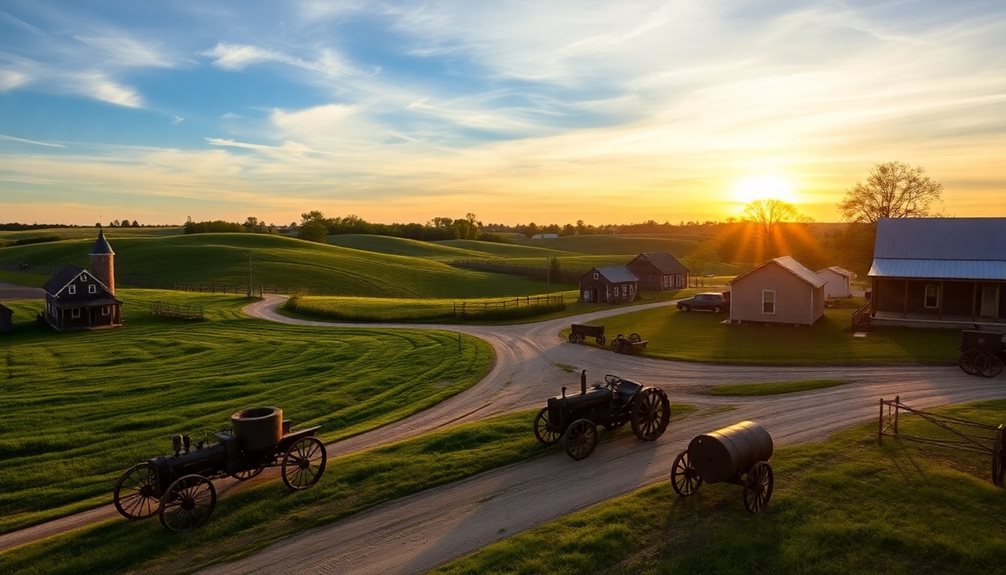
The history of Corcoran, Minnesota, begins with its early inhabitants, primarily members of diverse Native American tribes, who were followed by European explorers such as Father Louis Hennepin, who explored the region in 1680.
In 1855, settlers like Benjamin Pounder and Patrick B. Corcoran arrived, marking the beginning of modern Corcoran. By 1858, the township was formally organized, and it was named in honor of Patrick B. Corcoran.
This foundational period set the stage for future growth, as Corcoran eventually became a city in 1948.
Today, Corcoran’s rural charm continues to attract residents seeking a blend of countryside living and modern amenities.
Community Life
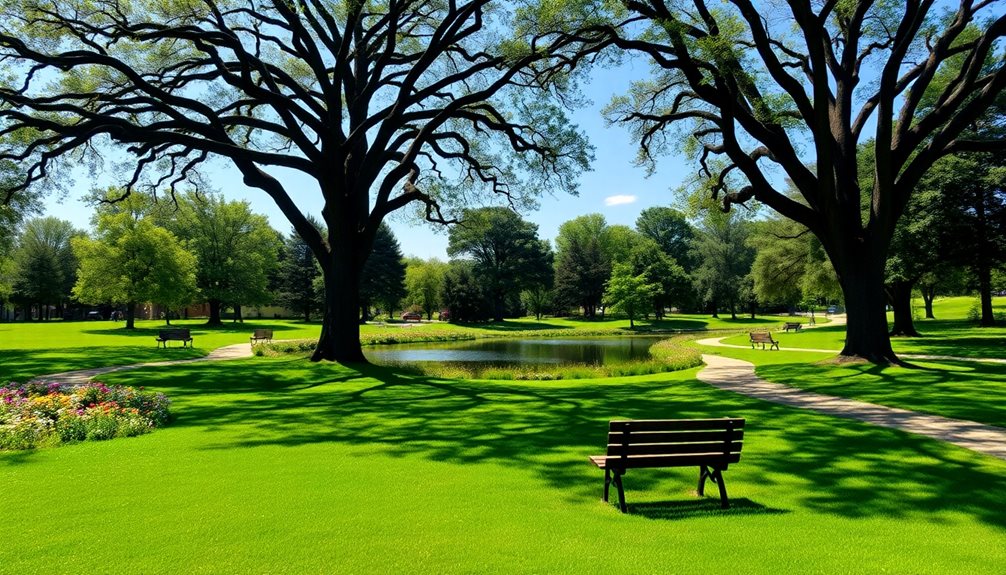
As Corcoran, Minnesota, grew from its early settlement days, community life began to take shape with a mix of residential neighborhoods, rural homesteads, and local businesses.
Community events, particularly Corcoran Country Daze, foster a tight-knit atmosphere, featuring live entertainment, vendors, and competitions.
The Hope Center offers support services, while parks, ice rinks, and golf courses like Shamrock and Pheasant Acres provide recreational opportunities.
Residents appreciate the rural ambiance and proximity to larger cities for shopping and entertainment.
The city’s low profile attracts those seeking a peaceful lifestyle enhanced by nearby urban amenities.
Many homeowners in the area choose concrete driveways for their durability and low maintenance requirements, with an expected lifespan of up to 30 years.
Geography and Amenities
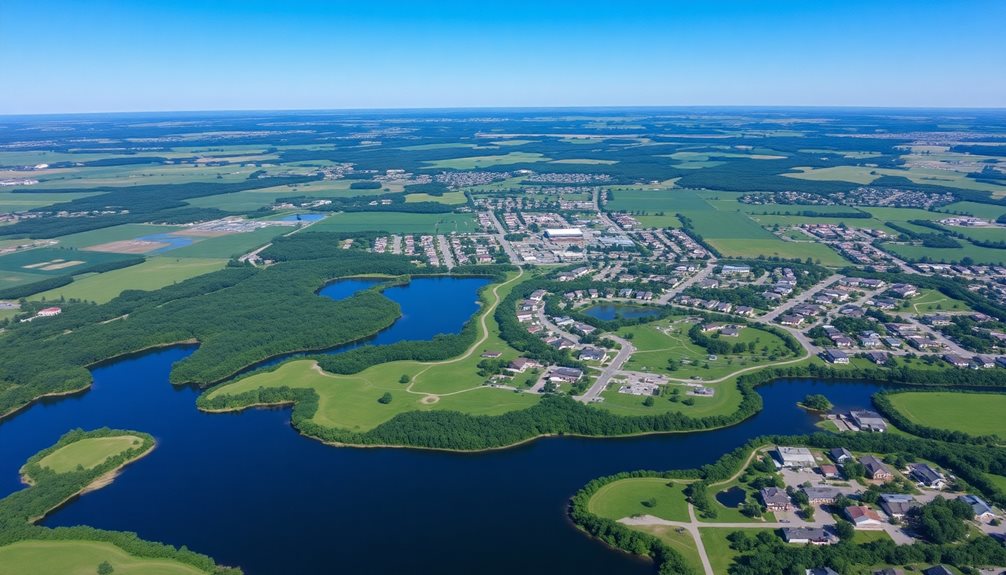
Corcoran, Minnesota, often nestles quietly in the heart of Hennepin County, blending its expansive landscape with a strategic proximity to Minneapolis.
With almost 36 square miles of land, Corcoran offers a mix of rural homesteads and residential neighborhoods, maintaining a rural atmosphere.
Its amenities include Corcoran Community Park, featuring ballfields, a hockey rink, and playgrounds.
Residents can also access the broader Hennepin County park system, with over 27,000 acres of parks and trails nearby, enhancing outdoor opportunities and community living.
Growth and Opportunities
Population growth in areas like Corcoran is deeply intertwined with strategic planning and infrastructure upgrades. The city’s All-Encompassing Plan outlines significant growth, with the population projected to reach 11,300 by 2040.
Recent infrastructure improvements, including water and sewer upgrades, have enabled large-scale developments. Hope Community Church’s proposal for mixed-use development, featuring 738 new homes and substantial commercial space, aligns with these plans, offering diverse housing options and economic opportunities.
This development is poised to boost the local economy and expand residential choices.
 Expert Final Thoughts
Expert Final Thoughts
To sum up, Corcoran, Minnesota, has evolved from its initial settlement in 1855 into a thriving rural community. The city’s identity is deeply rooted in its founders, particularly Patrick B. Corcoran, and its evolution includes becoming a municipality in 1948. With ongoing development focusing on infrastructure and sustainable growth, Corcoran continues to attract residents seeking a balance between natural beauty and modern amenities, positioning itself for future prosperity.
Osseo MN
Osseo, Minnesota, officially incorporated in 1875, boasts a rich history dating back to Pierre Bottineau's settlement in 1852 on Bottineau Prairie. Initially named Palestine, it was renamed Osseo in 1856, an Ojibwe term for "Son of the Evening Star." It is nestled between Brooklyn Park and Maple Grove in northeastern Hennepin County. The city maintains a charming community-focused lifestyle, balancing heritage and modernity. For more detailed insights into Osseo's culture, economy, and landmarks, further exploration is warranted.
Expert Highlights
- Osseo, Minnesota, is located in northeastern Hennepin County, near Brooklyn Park and Maple Grove.
- It was officially incorporated in 1875 and originally settled in 1852 by Pierre Bottineau.
- The city was named Osseo, meaning "son of the evening star," in 1856.
- Osseo features the historic Water Tower, listed on the National Register of Historic Places in 2017.
- It maintains a small-town charm with a strong community-oriented lifestyle.
History of Osseo
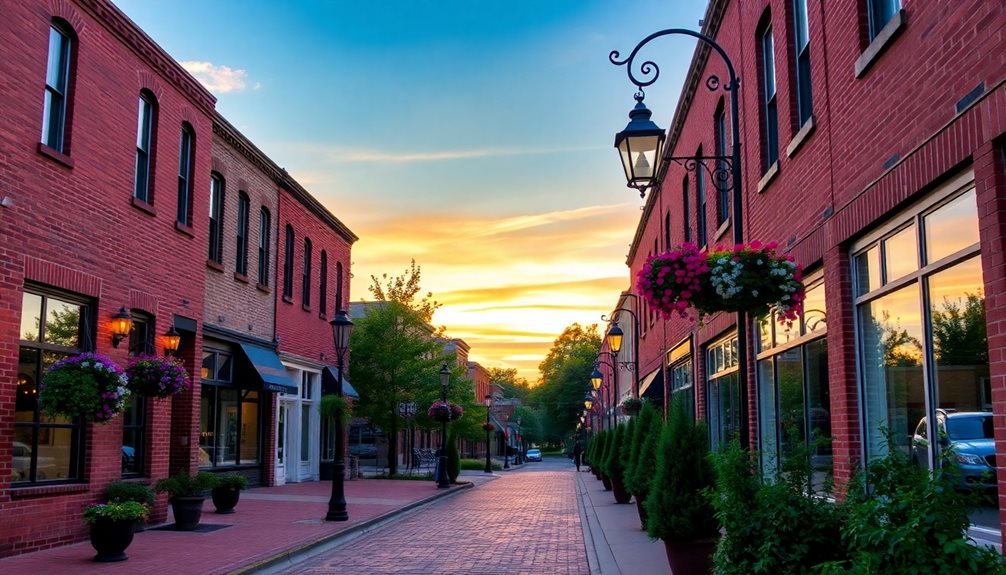
Osseo, Minnesota, has a history that stretches back well before its official incorporation in 1875. The area was initially settled as part of Pierre Bottineau's land claim in 1852, originally named Bottineau Prairie.
Osseo, Minnesota, was initially settled in 1852 as part of Pierre Bottineau's Bottineau Prairie.
In 1856, it was renamed Osseo, an Ojibwe name meaning "son of the evening star." Early residents were primarily French Canadians, New Englanders, and Germans.
The community developed with businesses like blacksmiths and general stores, eventually growing into a thriving town with a strong agricultural base.
Over time, Osseo has maintained its rich heritage while adapting to modern needs.
Today, visitors can discover the small-town charm that has made Osseo a beloved Minnesota destination.
Community Events
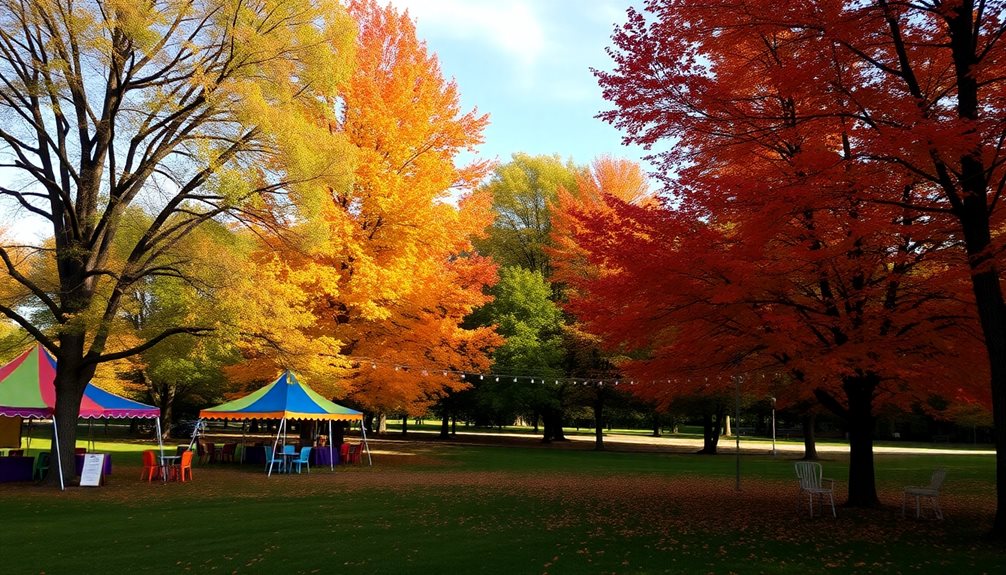
Community life in the area is characterized by a vibrant array of events that cater to diverse interests and age groups. These events foster community engagement and mutual support. For example, Osseo hosts various meetings and activities, including city council meetings and community gatherings. Located near charming Corcoran city, residents can easily participate in events across both communities.
| Event Type | Description |
|---|---|
| City Meetings | Regular community updates |
| Cultural Events | Cultural heritage exhibitions |
| Educational | Workshops and seminars |
| Community Programs | Volunteer opportunities |
| Recreational | Sports and recreational activities |
Geography and Landmarks
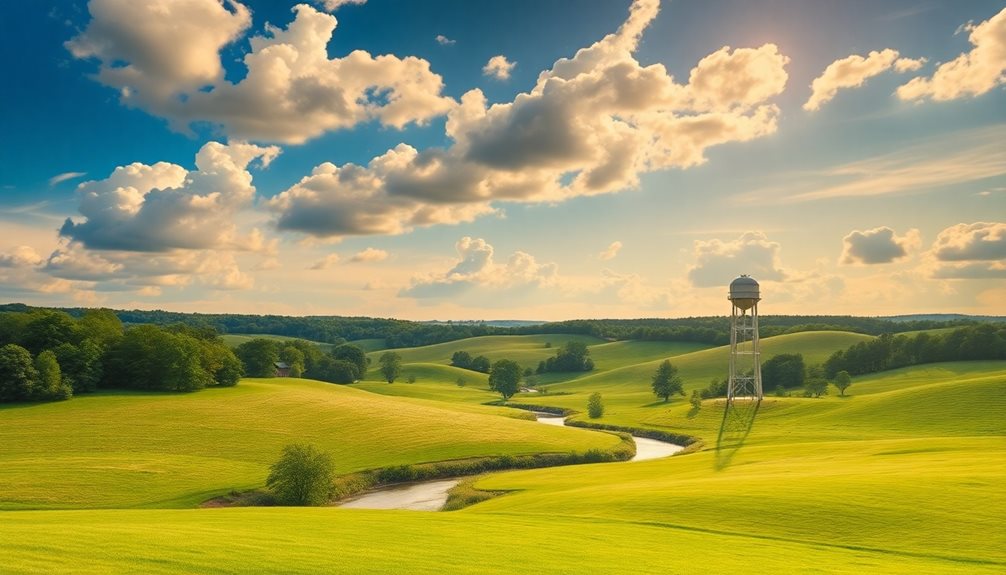
Beyond the rich tapestry of community events in Osseo, Minnesota, lies a distinct geography that shapes the city's character.
Osseo is situated in northeastern Hennepin County, adjacent to Brooklyn Park and Maple Grove, with U.S. Route 169 and County Road 81 serving as main thoroughfares. The city's elevation is approximately 886 feet, and its land area totals about 0.74 square miles, entirely composed of land.
Notable landmarks include the iconic Osseo Water Tower, constructed in 1915 and listed on the National Register of Historic Places in 2017.
Local Economy and Lifestyle**
While Osseo, Minnesota, is nestled within a broader regional economy influenced by Minneapolis's strong sectors, such as finance, healthcare, technology, and manufacturing, the local economy is characterized by its own unique dynamics.
The city's economy faces challenges with a jobs grade of C+, suggesting room for growth. However, the median household income stands at $66,875, and residents benefit from an urban area feel with accessible amenities.
The cost of living receives a B minus, reflecting relatively moderate expenses for living and housing compared to larger metropolitan areas.
The lifestyle in Osseo is community-oriented, with numerous local events.
Expert Final Thoughts
Osseo, Minnesota, is a city steeped in history, having been incorporated in 1875 with roots dating back to its settlement in the mid-19th century. The city's name originates from the Ojibwe word for "there is light." Today, Osseo is primarily residential with a small downtown area featuring local businesses. Its community events and historical landmarks, like the Osseo Water Tower, enrich local life. The economy reflects a mix of retail and service sectors.
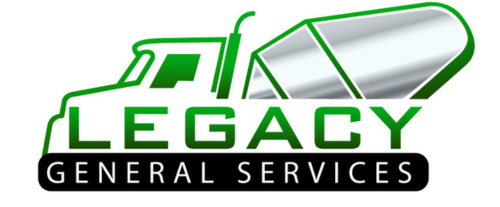
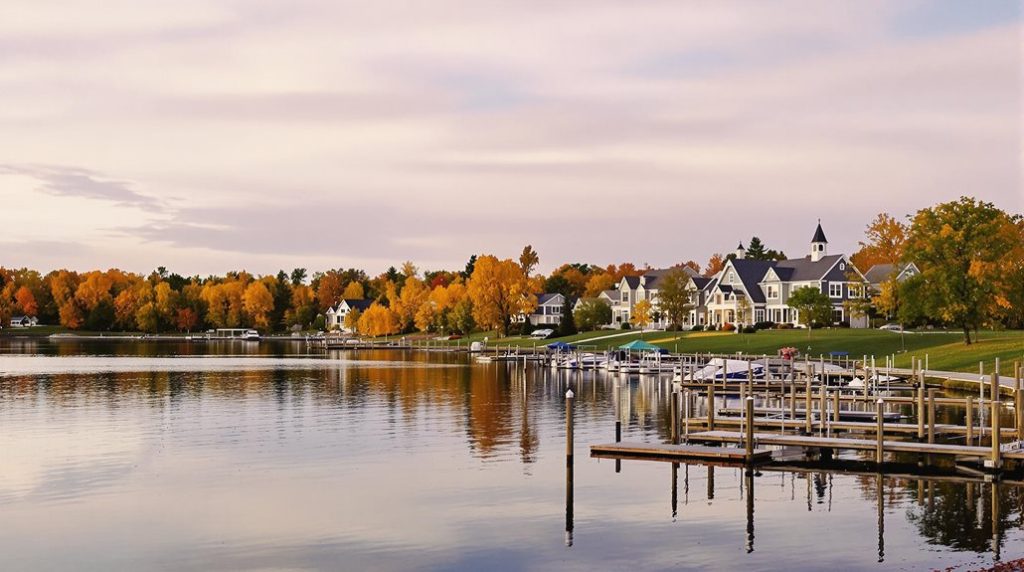
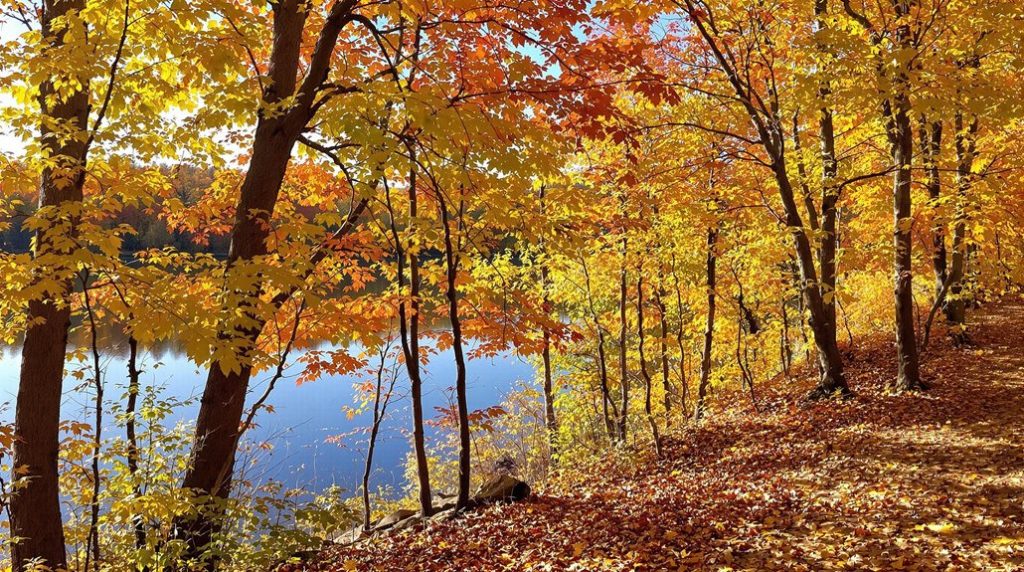

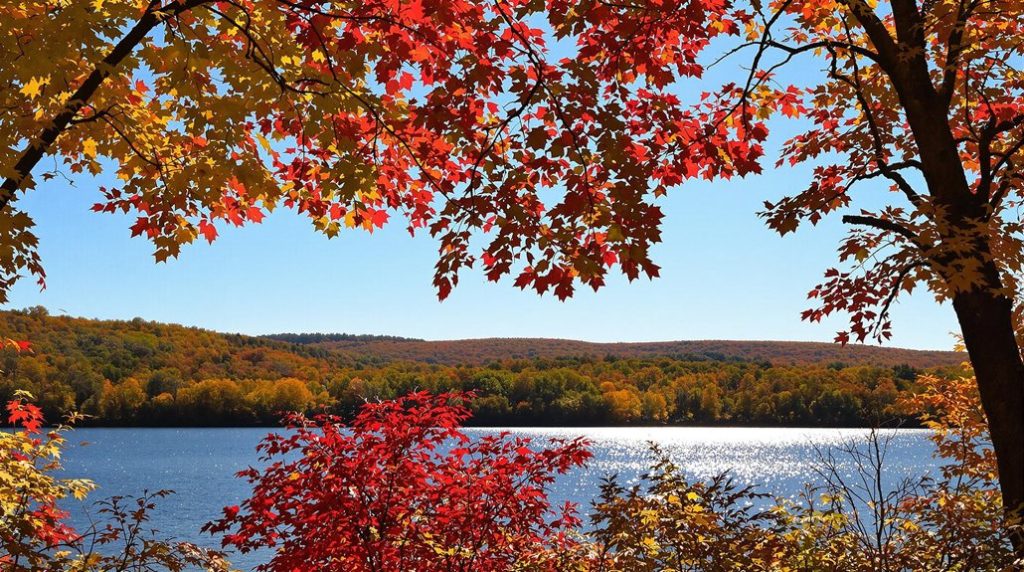

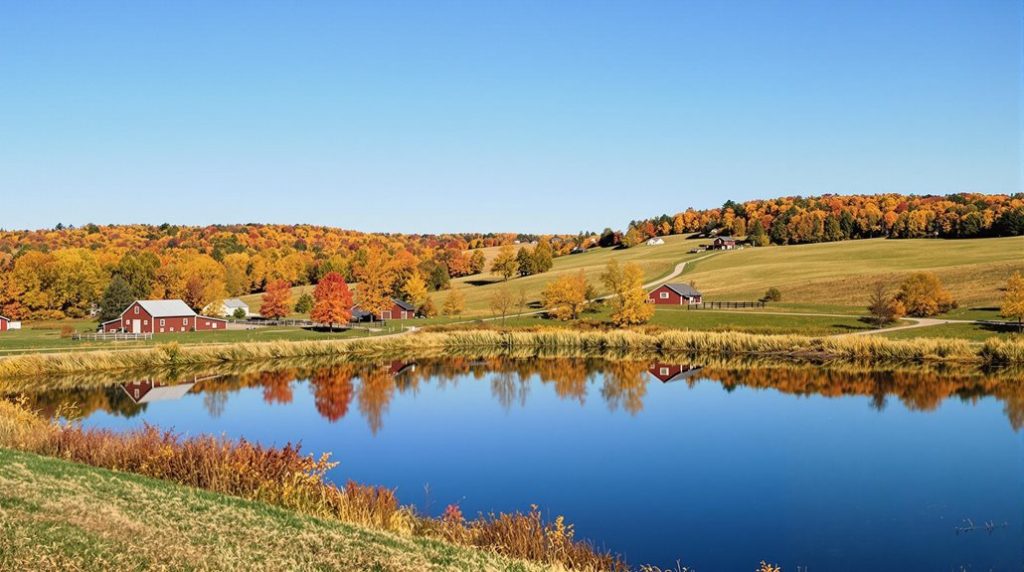
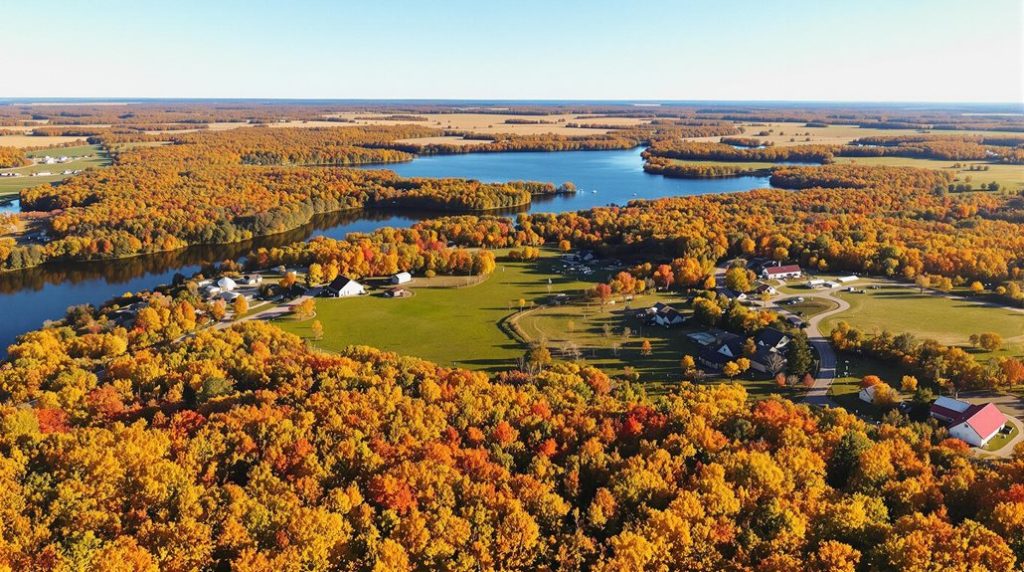
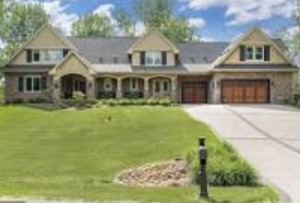 Expert Final Thoughts
Expert Final Thoughts